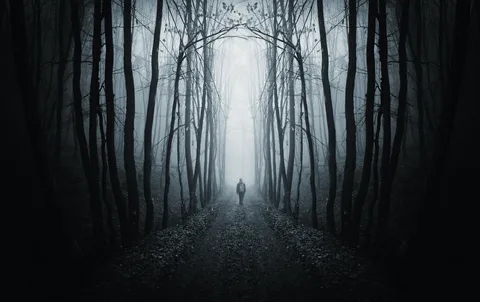From Being Feared to Owning the Story
Horror has always reflected what people are scared of. For the longest time, anything perceived as different was relegated to the “villain” category. That included queer folks. They were often painted as monsters, creepy outsiders, or tragic characters doomed from the start. But things aren’t stuck like that anymore. Horror has slowly started turning around. Queer characters now get to take up space in ways that feel real, strong, and way more honest. It’s everywhere in the entertainment industry, from films to games and platforms like 22Bet.
The Fear of Being ‘Other’
Horror runs on the idea of otherness. The things that society fears — the unknown, the misunderstood — become monsters on screen. Think vampires, ghosts, werewolves, masked killers. For years, queerness got folded into that without anyone really saying it outright. Characters who were overly feminine, didn’t fit gender norms, or acted in ways that seemed “off” often got read as queer — even if the script never said it out loud.
You can see this in old films pretty clearly. Dracula’s Daughter (1936) hints at it. So does Silence of the Lambs (1991), though in a way that really didn’t age well. Those characters made queerness look like something dangerous or unstable. And while some LGBTQ+ folks saw pieces of themselves in these coded figures, the bigger message wasn’t a great one. It was mostly about fear.
No More Hiding — Queer Stories Out Front
Fast forward to now, and things are shifting. Horror started catching up with the real world. Instead of hiding queerness in subtext, the stories are becoming more direct. And not in a way where being queer is the scary part — instead, queerness is tied to strength, survival, and figuring yourself out.
Take Knife + Heart (2018). It follows a lesbian porn filmmaker in 1970s Paris trying to solve murders in her community. The movie mixes slasher vibes, queer eroticism, and art-house weirdness. Nobody’s hiding who they are. Being queer isn’t the problem; it’s part of the story’s heartbeat.
Same with Hypochondriac (2022). It’s about Will, a gay guy dealing with hallucinations and family trauma. The horror isn’t about him being gay. It’s about the fear of losing control, falling apart mentally, and the stigma that comes with that. Real stuff. Messy, painful, but not about queerness being a threat.
Then there’s They/Them (2022), set in a conversion therapy camp. This one flips the old horror rulebook. Instead of killing off the queer characters first (like slashers used to do), the film centers on them. The real monster isn’t just the masked killer — it’s the camp itself, and the system that thinks queerness needs to be “fixed.”
Why Queer Folks Connect With Horror
It’s not hard to get why horror feels personal to LGBTQ+ folks. Living in a world where being different makes you a target already feels like a horror plot. Misunderstood. Chased. Having to fight to exist. Horror just puts those feelings into stories — but also gives people the power to fight back.
For trans folks, body horror or transformation stories hit differently. It’s not always negative, either. Sometimes it reflects dysphoria, sometimes the journey toward becoming who you really are. For gay and lesbian folks, survival stories — facing monsters or oppressive systems — mirror the real world more than most people think.
Flipping the Script on the Monster
One of the coolest things happening in horror now? Taking back the monster. Where monsters used to be metaphors for queerness as something bad, now they’re often about power. Being a monster doesn’t mean being broken — it means being strong, being different, and owning it.
Directors like Carter Smith (Swallowed, The Ruins) lean into this. And there are tons of indie creators out there making short horror films for YouTube, Shudder, and Crypt TV who are doing the same. Their characters aren’t just surviving — they’re fighting back, and they’re thriving because of the things that make them different.
Not Perfect — Not Yet
That said, horror’s not fully there yet. Some films still fall back on lazy writing — throwing in a token queer character with no depth. Or leaning too hard into trauma porn, especially around stuff like conversion therapy. That can end up doing more harm than good if it isn’t handled with care.
But here’s the thing — more queer filmmakers are showing up behind the camera. That’s making a real difference. The more these voices drive the story, the more horror shifts into something that actually reflects real, layered queer experiences.
Horror Isn’t Just Fear — It’s Power
Queer horror’s come a long way from the days of hiding in the background or being the villain. Movies like Knife + Heart, Hypochondriac, and They/Them show how far it’s come — and how much further it can go. These stories still deal with pain, sure. But they’re also about finding strength, about transformation, and about taking control of the narrative.
Horror isn’t just about being scared anymore. For a lot of queer folks, it’s about seeing yourself survive, fight, and even win. What used to be a genre that said, “You don’t belong here” now often says, “This space is yours, too.” And that? That’s powerful.

